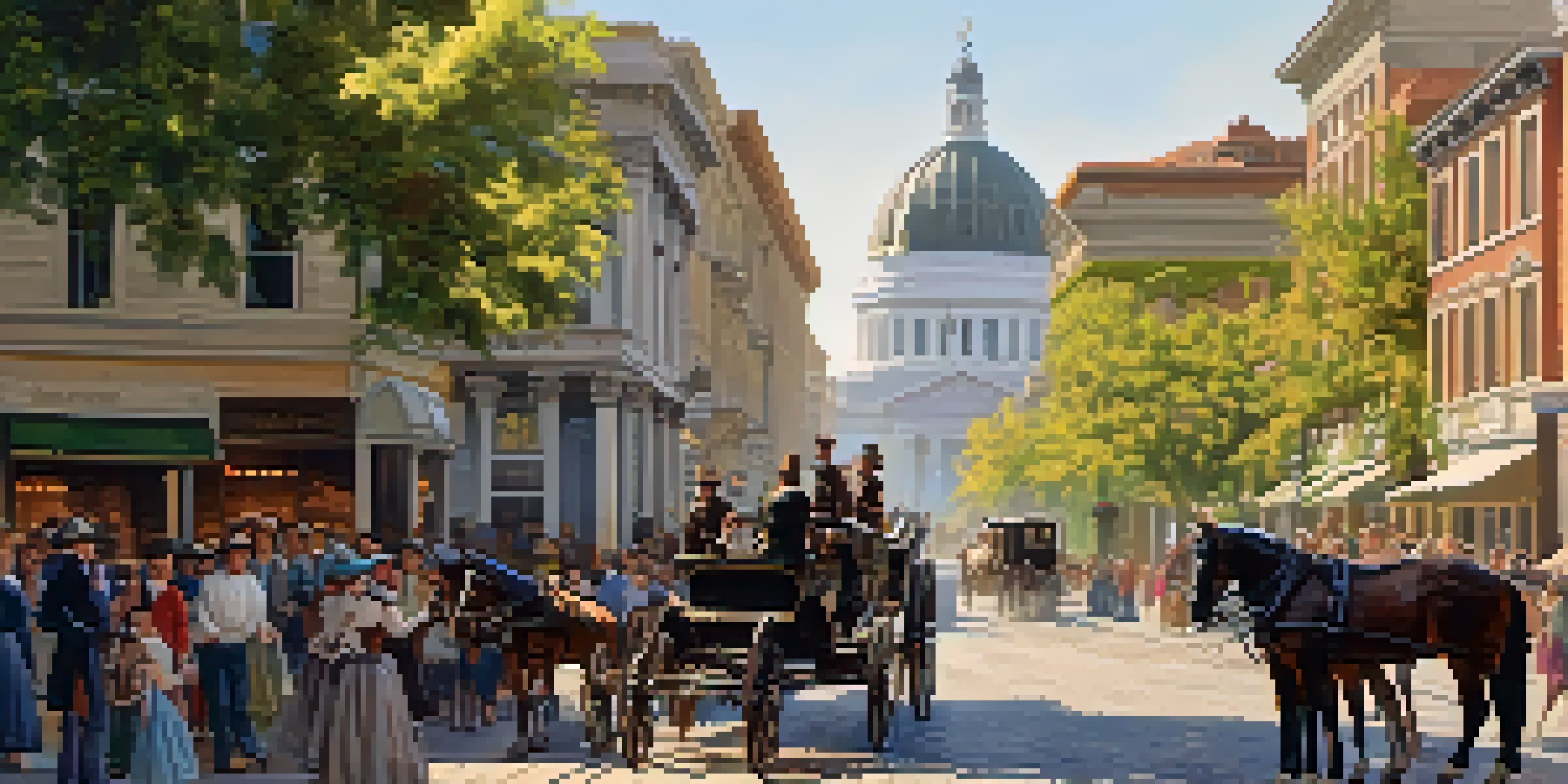Historical Overview of Sacramento's Public Transportation System

The Early Days: Horse-Drawn Carriages and Streetcars
Sacramento's public transportation system began in the mid-19th century with horse-drawn carriages, providing essential mobility to residents. These carriages paved the way for the introduction of streetcars in the 1870s, which significantly improved transit options. Initially, the streetcar lines connected key areas of the city, making it easier for people to commute to work or visit family and friends. This evolution marked a crucial step in shaping the urban landscape of Sacramento, as it began to grow rapidly.
The Rise of Electric Streetcars in the 20th Century
By the early 1900s, Sacramento embraced electric streetcars, which replaced their horse-drawn predecessors. This shift not only enhanced speed and reliability but also expanded the reach of public transportation throughout the city. The electric streetcars connected suburban areas to downtown, allowing for greater accessibility and spurring residential development. This era symbolized a significant transformation in how residents navigated their growing city.
Evolution of Sacramento Transit
Sacramento's public transportation has transformed from horse-drawn carriages to modern light rail, reflecting the city's growth and changing mobility needs.
The Impact of Buses: A Shift in Public Transit Dynamics
The decline of streetcars in the mid-20th century was met with the rise of bus transportation, offering more flexible routes and schedules. Buses allowed for easier access to neighborhoods that the streetcars couldn't reach, catering to a changing urban demographic. The introduction of bus lines also reflected the broader national trend of suburbanization during this period. This transition marked a new chapter in Sacramento's public transportation history, as buses became the backbone of the system.
Integration of Light Rail: Modernizing Transit Solutions
In the 1980s and 1990s, Sacramento took a significant step forward with the introduction of light rail systems. This modern mode of transportation provided a fast and efficient alternative to bus travel, connecting key areas within the city and beyond. Light rail systems have not only improved transit times but also contributed to reducing traffic congestion and promoting sustainable commuting options. The light rail's success showcased Sacramento's commitment to embracing innovative transportation solutions.
Community Engagement Matters
Active resident involvement has shaped Sacramento's transit policies, ensuring that the system meets the diverse needs of its users.
Challenges Faced: Funding and Infrastructure Issues
Despite advancements, Sacramento's public transportation system has faced numerous challenges, particularly regarding funding and infrastructure. Budget constraints often limited the expansion and maintenance of transit services, leading to service reductions in some areas. Moreover, the need for updated facilities and technology has become increasingly apparent as the city grows. Addressing these issues is crucial for ensuring that Sacramento's public transportation can meet the demands of its residents.
Community Engagement: Shaping Transit Policies
Community engagement has played a vital role in shaping Sacramento's public transportation policies. Input from residents and advocacy groups has led to initiatives aimed at increasing accessibility and improving transit options. Public forums and surveys have become essential tools for gathering feedback, ensuring that the transportation system meets the needs of all users. This collaborative approach fosters a sense of ownership among residents, making them active participants in the evolution of their transit system.
Focus on Sustainable Solutions
Recent initiatives in Sacramento emphasize sustainable transportation options, aiming to reduce carbon emissions and enhance residents' quality of life.
The Push for Sustainable Transportation Options
In recent years, Sacramento has increasingly focused on sustainable transportation options to combat climate change and promote healthier lifestyles. Initiatives like bike-sharing programs and pedestrian-friendly infrastructure have gained traction, encouraging residents to explore alternative modes of transport. These efforts align with the city's broader goals of reducing carbon emissions and enhancing the quality of life. Embracing sustainability is not just a trend; it's becoming a critical component of Sacramento's transportation planning.
Looking Ahead: The Future of Public Transportation in Sacramento
As Sacramento continues to grow, the future of its public transportation system looks promising yet challenging. Ongoing investments in technology, such as real-time tracking and mobile ticketing, aim to enhance user experience. Additionally, there is a renewed emphasis on expanding light rail and bus services to accommodate the influx of new residents. By prioritizing innovation and community needs, Sacramento's public transportation system can evolve to meet the demands of an ever-changing urban landscape.